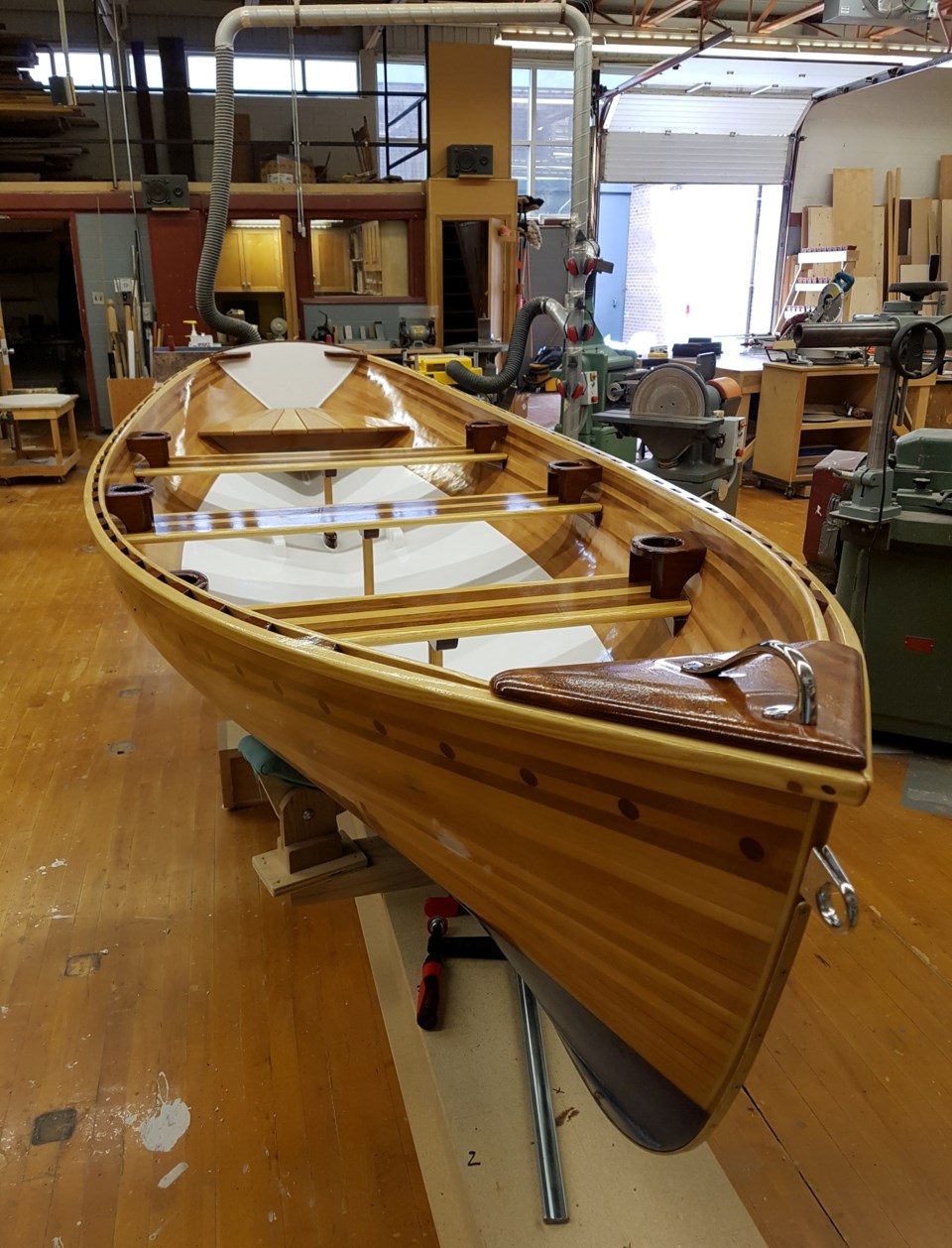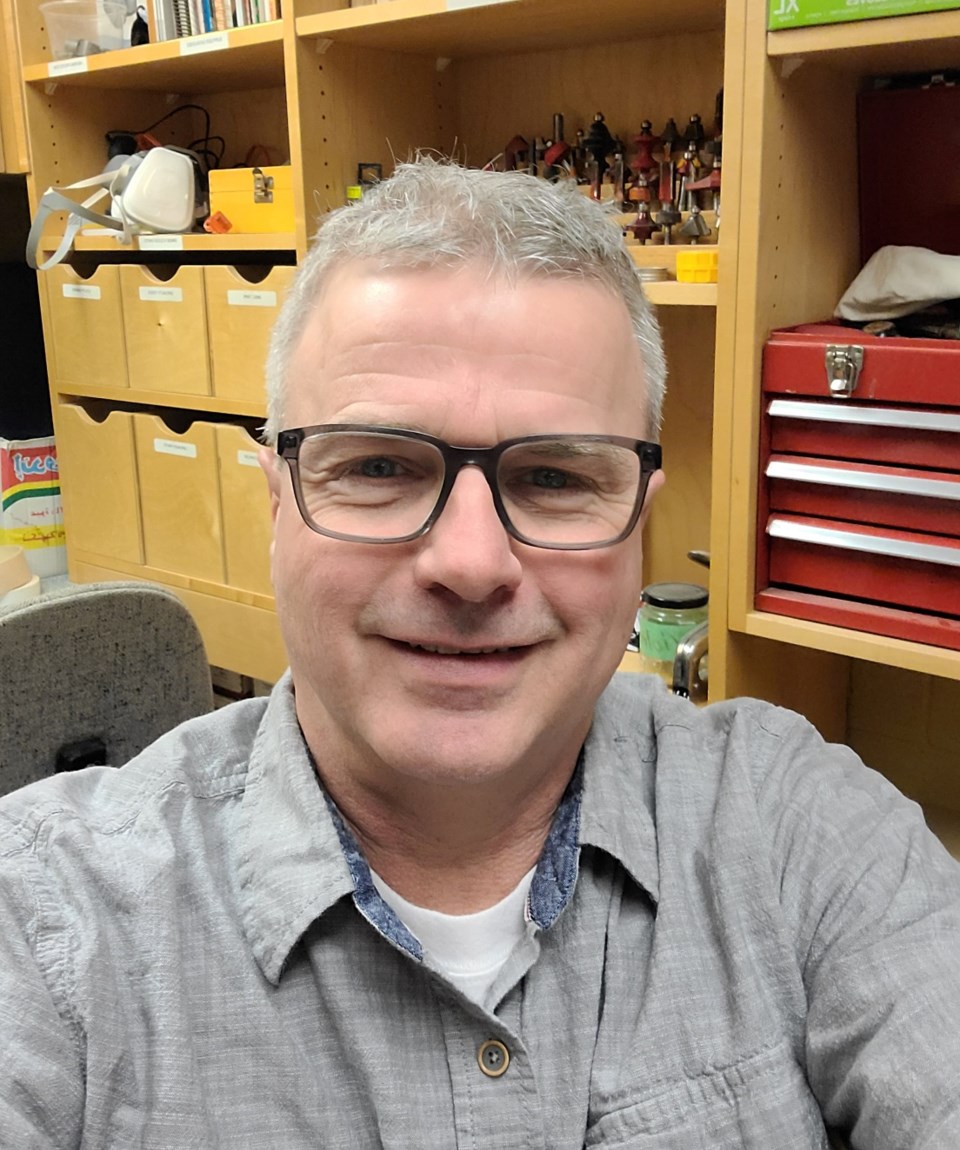In case you missed it. This article was previously published on StratfordToday.
After years of putting it off, Steve Faber finally got into teaching.
For that, thousands of students at Stratford District Secondary School can thank the fighting spirit of Steve's mom, Joyce Faber.
A licensed carpenter, Faber was enjoying the life of a tradesman. His mother always insisted that he would make a great teacher and encouraged him to apply for teacher's college. Year after year, though, he expressed his content with his career and informed his mother that he wasn't going to apply.
Joyce Faber wasn't the type to give up.
She was diagnosed with colon cancer at the age of 36. Before she passed at the age of 52, Faber, knowing his mom wouldn't be in his life much longer, put in his teacher's college application, and was was accepted. He did a practicum in St. Thomas - where Bruce and Joyce Faber lived - at Arthur Voaden Secondary School.
After that, he ended up getting a full-time job in Stratford. His first full year of teaching at SDSS was 1994/95.
Faber, 62, handed in his keys last week, a symbolic gesture of retirement for a much-loved educator.
"It's hard to fathom," Faber told StratfordToday in his first week of not working at SDSS in three decades. "I look at the number of courses I taught, roughly 3,600 students. Just a hair under 30 years. A lot of graduates out there working in the trades."
A construction technology teacher, Faber said he was fortunate to join an "energetic department", that all worked together, including the drafting and auto departments, to complete various projects over the years.
"As much community-based stuff as we could do. At that time, we had a large rural population of farm boys and the work ethic was very strong. We would get stuff done. It was miraculous. We could spend $18,000 in materials keeping one crew of kids going in a double credit construction class."
Faber taught things like basic framing and how to calculate roof pitches. He taught cabinet making and millwork and basic woodworking. There was always a big focus on 'trades math'.
"Even if you are plumbing, you still need math," he said.
For 20 years straight, students at SDSS built the door prize for the Stratford Home Show, in partnership with Stratford and Area Builders Association. The school would design and build a shed and then auction it off. Faber and his colleagues always made sure the designs were not too simplistic.
"We never made it easy for the kids. We would include curved rooves, they would be wired for electricity. We tried to encompass every aspect of the real world in the build."
Students built mailboxes for the local police station and service counters for local businesses. There were some bigger projects, including a 14-foot cedar strip row boat (pictured below).

A team of five worked on a Pietenpol Air Camper, a plane designed to be built of spruce and plywood. The plane had a 30-foot wingspan and a 17-foot fuselage.
Faber said the onset of technology, and every teacher's nemesis, cell phones, led to an unfortunate decline for some students that was apparent for someone who had been in the classroom before they were commonplace. Attention spans are shorter and screens are dominating lives, he suggested.
"The biggest change was the motivation of the kids. Not for every kid but it has made teaching challenging. Young teachers need to be firm with what they are after. It can be a rude awakening when students get out into the world of work."
Faber was known for his cell phone vault, which would house phones during his classes.
"I'm old school. I ran a strict shop. Safety was a big concern. I didn't want kids on their phone or distracted. You need to hear those machines. A change in the RPM of a machine can tell you a lot about what is happening. If you have your ear buds in, something is going to happen sooner or later."
SDSS has instituted a no cell phone policy, which should help, Faber said, if everyone buys in.
Faber recalled when students built the rowboat, some would arrive early in the morning or stay until 10 p.m. at night. Over the years, students have embarked on successful careers in the trades and he hears plenty of stories about graduates working rewarding, good-paying jobs.
One of his former students, Nicole Harloff, went on to become a licensed carpenter and is now a building inspector for Perth East. Another, Riley Walsh, runs his namesake local construction company.
Faber said there is certainly no shortage of career options for graduates, as the country faces historic skilled labour shortages.
"Everyone you talk to is always looking for someone."
Faber continued to work outside of the classroom while he was a teacher. As a licensed Red Seal carpenter and cabinet maker, and with a shop at home, he is looking forward to picking and choosing jobs that he wants to work on.
He is confident his graduates were prepared for the working world. The school also has a great replacement, he noted, in Greg Judge. Faber described Judge as skilled and versatile and "the kind of guy you want" teaching the next generation.
"My goal was to teach them how to think, how to problem solve and how to be creative. We picked things that were challenging. If you teach them the math and what the tools are capable of, the creative side can take that knowledge and learn how to apply it."




